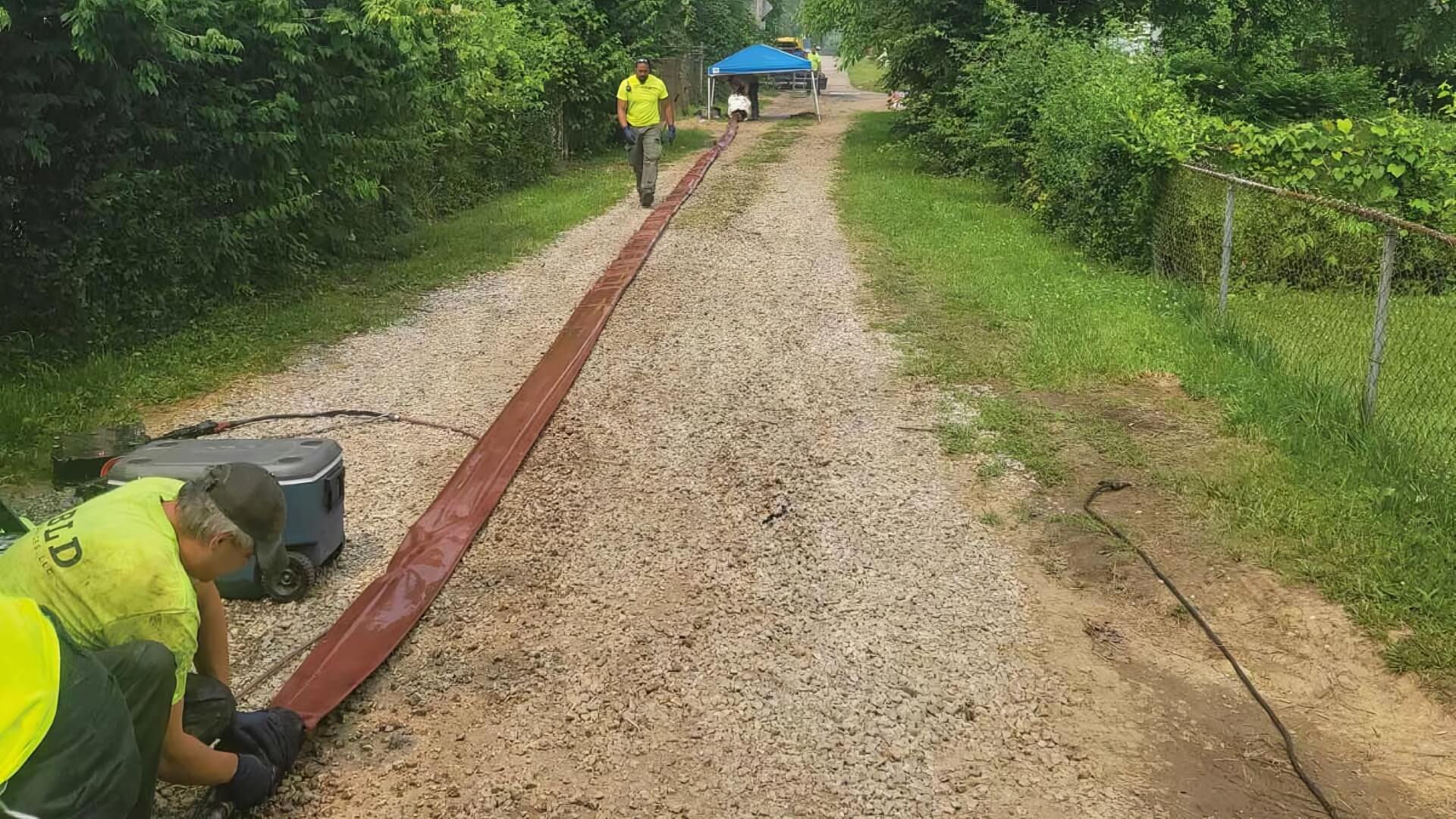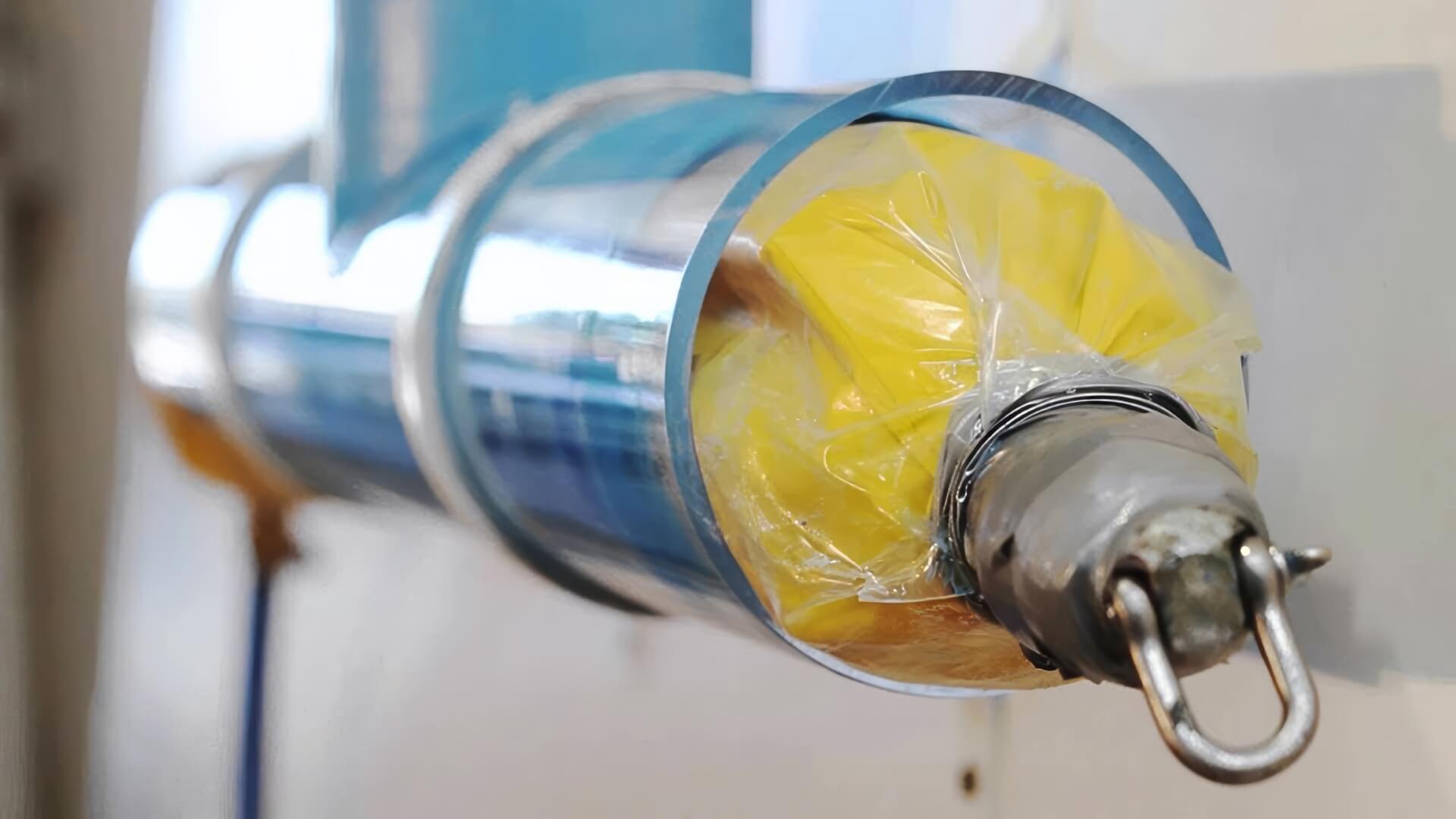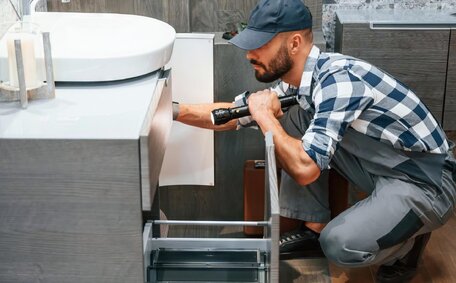Introduction to Safe Gas Cylinder Storage
Storing gas cylinders safely is essential to minimise hazards in industries that use pressurised gases. Incorrect storage of gas cylinders can result in hazards like leaks, explosions, and fires. Specialised businesses, including Padstow Plumbing, must comply with rigorous safety standards for cylinder storage.
Be mindful that gas cylinder storage is risky due to high-pressure contents that can be flammable or toxic when mishandled. Cylinders must be stored upright, securely fastened and shielded from hazards such as falls, heat, and potential ignition sources. Storage areas should be in the open air, well-ventilated, clean and clear of obstructions.
This article outlines complete storage handling procedures for gas cylinders, conducting risk assessments, and transporting them safely for commercial and residential use. Our aim is to enhance health and safety awareness, emphasizing proper handling to prevent hazardous leaks, injuries, and property damage.
Understanding the Hazards of Gas Cylinders
Procedures for safe handling and storage address hazards associated with high-pressure gases in cylinders, which may be as high as 2,500 psi. Risks such as leaks, ruptures, or valve failures leading to explosions are present with any gas, particularly flammable types like lp gas. Flammable lpg gas in an lpg cylinder like propane or acetylene can ignite rapidly.
Even minor leaks from gas cylinders can present considerable danger. Gases like carbon monoxide and chlorine are poisonous. A minor leak in an enclosed space poses a lethal threat. Gases like carbon monoxide and chlorine are poisonous.
Gas cylinders your business uses are heavy; incorrect use can damage cylinder valves and pipework, causing leaks. Padstow Plumbing techs understand the principles of handling storage of gas cylinders when training for their manual transportation.
Heat sources can compromise the integrity of gases stored in cylinders, leading to leaks or explosions. Certain gas appliances may require compressed gases, which pose a risk of autoignition.
Gas cylinders should be stored in a well-ventilated outdoor area, within a gas bottle cage, kept away from any ignition sources. Other factors, such as static electricity buildup or chemical reactions with cylinder materials, may weaken their integrity, which you should keep away any potential hazards over time.
Key insight: Cylinders harbour hazardous pressurised gases that carry risks of fire, explosion, poisoning, asphyxiation, damage and injury if not managed correctly. Safe storage, transport and leak prevention are paramount.
Choosing the Right Location
Selecting an appropriate area for the storage gas cylinders requires a risk assessment, and careful planning guided by safety codes and regulations. Location criteria for a gas cylinder store aim to isolate cylinders from hazards or situations that could lead to leaks, explosions, fires or accidents.
The cylinder storage location should ideally be outdoors, offering ample ventilation and separation from buildings, boundaries and potential ignition sources such as electrical or heating equipment. Stored cylinders must be safeguarded from the elements, including sunlight, adverse weather, impacts, water ingress, and temperature variations.
The storage area should provide for ground level facilities that aid inspection and handling. The area should have firm, level footing with good drainage and space for securing cylinders upright. Ramps or stairs aid trolley access without excessive tilting.
Restrict access to stored gas cylinders with fencing, cages, or locks to deter unauthorised entry. Displaying warning signage is mandatory. Avoid cluttered spaces and separate full from empty in the gas cylinder storage area, storing cylinders sequentially by gas type.
Gas cylinders stored indoors must have natural or mechanical ventilation with air exchange rates stipulated in AS 4332. Contingency plans for gas leaks or fire should be established with exit routes maintained clear.
Properly Securing Cylinders
Gas cylinders must be stored upright and securely fastened at all times to prevent them from tipping. Tilted, rolling or cylinders falling can cause damage to valves, resulting in dangerous leaks.
Ensure cylinders are stored upright and secured firmly with chains, straps or racks purpose designed and bolted to the floor or wall. Strapping should encircle cylinders just above their centre of gravity to maintain them in an upright position.
Following an inspection at Padstow, out of 80 cylinders assessed, 66 were found improperly secured, underscoring the need for awareness of regulatory requirements for cylinder restraint.
Smaller single cylinders can be placed on benches. Larger cylinders, regardless of size any, should utilise custom brackets, cradles or containment grids evenly supporting base and sides to prevent tipping. Cylinders should be grouped and secured to prevent them from striking each other if dislodged.
Maintaining Adequate Ventilation
A cylinder storage area must have adequate natural or mechanical ventilation to prevent accumulation of leaked gases. Ventilation aims to dilute or remove hazardous vapours to safe levels.
LPG storage outdoors utilises natural airflow, while indoor spaces require mechanical ventilation adhering to specified air exchange rates. For instance, storage areas for lpg cylinders must have a minimum of 6 air changes per hour in accordance with AS 4332.
Ventilation systems must direct any leaking gas away from ignition sources or populated areas. Exhaust fans, vents and ducting must be explosion-proof. Openings should be baffled to avoid wind blowing directly into stores.
It is important to consider increasing ventilation temporarily during the movement of cylinders or when connecting or disconnecting them. Monitoring of gas levels should ensure concentrations remain below 5% of the lower explosive limit.
Proper ventilation ensures that leaked gases, often heavier than air, disperse rapidly instead of accumulating. This prevents the gas cloud reaching levels where ignition could cause an explosion.
Separating and Labeling Cylinders
Segregate gas cylinders by type into specific storage areas to minimise mix-ups. Flammable gases must be kept at least 20 feet from oxidizers like oxygen cylinders, or a 30-minute fire rated barrier should isolate them as per AS 4332.
Always segregate full and empty cylinders to facilitate easy inspection and handling. Empty cylinders have different storage duration limits before requiring requalification or being taken out service for disposal.
Important information must be displayed on all cylinders with clear labels or stencilled markings to identify the gas type and hazards in line with WHS regulations. Signage should also indicate storage compartment designations (‘Full’ or ‘Empty’) and relevant safety precautions, restrictions, or incompatibilities.
Separation and strict labelling prevents confusion or accidents when handling cylinders. Workers can easily identify the type gas, whether the contents are flammable/oxidising, and separate opposing hazards. This improves safety and compliance when managing stored cylinders.
Following Transportation and Handling Procedures
Safety is paramount when transporting or handling compressed gas cylinders. Cylinders must remain upright and secured at all times on an appropriate hand truck or trolley designed for compressed gas. Small cylinders may be carried short distances by two people using correct manual handling techniques.
Workers must wear protective equipment like steel-capped boots and gloves when using gas cylinders. Cylinders should never be dragged, rolled or slid along surfaces horizontally as this can damage valves and pipework.
Vehicles with cargo areas designed to transport gas in open air should have dedicated storage with restraints, and must have adequate ventilation. Bracing prevents cylinders striking each other or falling during vehicle movement.
Ensure cylinders are placed with their valves closed on a firm, level surface or securely fastened on racks. Protective caps should be provided for valve protection and remain in place until the cylinder is secured and ready for use.
By adhering to safe practices, learn more about reducing the risk of leaks, explosions, fires and manual handling injuries when moving pressurised cylinders.
Cracking and Opening Cylinders Safely
How to handle a pressurised gas cylinder is important; safe opening procedures must be followed before attaching regulators or pipework. Valves at least one should never be forced open if stuck.
Initially, the protective valve cover should be loosened slowly to release any residual pressure. This first loosening is known as ‘cracking’ the cylinder. Tilt the cylinder slightly to prevent liquid or debris escaping onto the handwheel during crack opening.
Stand facing the outlet with the cylinder between yourself and the valve outlet. Keep hands on the wheel to control the release rate. Test for leakage with soapy water if any hissing persists after immediate pressure release.
To fully open the valve, turn the handwheel or spindle anticlockwise. Left-hand threads are used so flow direction tends clockwise. If the valve binds, stops or is difficult to operate, close it and call a specialist.
Opening cylinders must be handled by competent staff wearing appropriate PPE. Employ safe manual handling techniques and secure the cylinder firmly during operation. Avoid working alone and ensure adequate ventilation is provided to prevent accumulation of leaked gases.
Using Proper Equipment
Using the right equipment when handling gases under pressure in cylinders is vital for safety. Personal protective equipment (PPE) such as steel-capped boots, gloves and eye protection should be worn.
Cylinders must be secured upright at all times, ensuring stability more than ever. Use proper trolleys, racks, chains or straps designed for compressed gas storage. Prevent cylinders from falling, rolling or striking each other.
Have an appropriate gas leak detector on hand during storage area inspections and when connecting regulators or pipework. Conduct regular maintenance checks on equipment.
Ensure adequate ventilation with 6+ air changes per hour for storage flammable gases. Have fire extinguishers nearby and know emergency procedures.
Only competent, trained individuals should handle cylinders, applying proper manual handling techniques. Follow all safety regulations for your region when managing hazardous pressurised gases.
Abiding by Relevant Codes and Regulations
Full adherence to safety codes and regulations is mandatory for businesses and individuals dealing with gas cylinders. Australian standards, such as AS 4332, dictate the practices and legalities for storing and handling gases in cylinders.
Companies like Padstow Plumbing stay up-to-date on changing rules through regular training and by consulting trusted bodies such as the gas association. We advise clients on the importance of submitting form checks for their storage procedures and equipment against current local council and state regulations.
Essential considerations encompass:
- How storage should be set up, including area selections and minimum separation distances
- Adequate, maintained ventilation systems
- Signage, labelling and segregation of cylinders
- Securing cylinders upright when storing compressed gases to prevent falls
- Manual handling techniques and PPE Requirements
- Secure transportation of cylinders in adapted vehicles
- Emergency and contingency planning
- Workplace Health and Safety practises
Businesses failing inspections or audits can incur significant fines, among other disruptions that should be avoided. Padstow Plumbing can help clients find out how to navigate legislation to become fully compliant safety leaders.
Having Appropriate Warning Signs
Legally mandated warning signage is crucial in all gas cylinder storage areas to signal potential dangers. Ensure signs are conspicuous, legible from a safe distance, and installed at access points.
Mandatory signs as per Australian Standard 1319 include:
- Flammable gas - black lettering on yellow background
- Oxidising gas - black letters on yellow background
- Toxic gas - white letters on a black background with white skull symbol
General compressed gas storage signs should also be displayed with restrictions, precautions and emergency contact details listed.
At Padstow Plumbing, we recommend installing weatherproof metal or rigid plastic signs. Important information like gas type, storage area designations and emergency procedures should feature prominently without risk of fading over time.
Maintaining highly visible, compliant safety signs prevents accidents and raises awareness on risks when handling hazardous pressurised gases.






